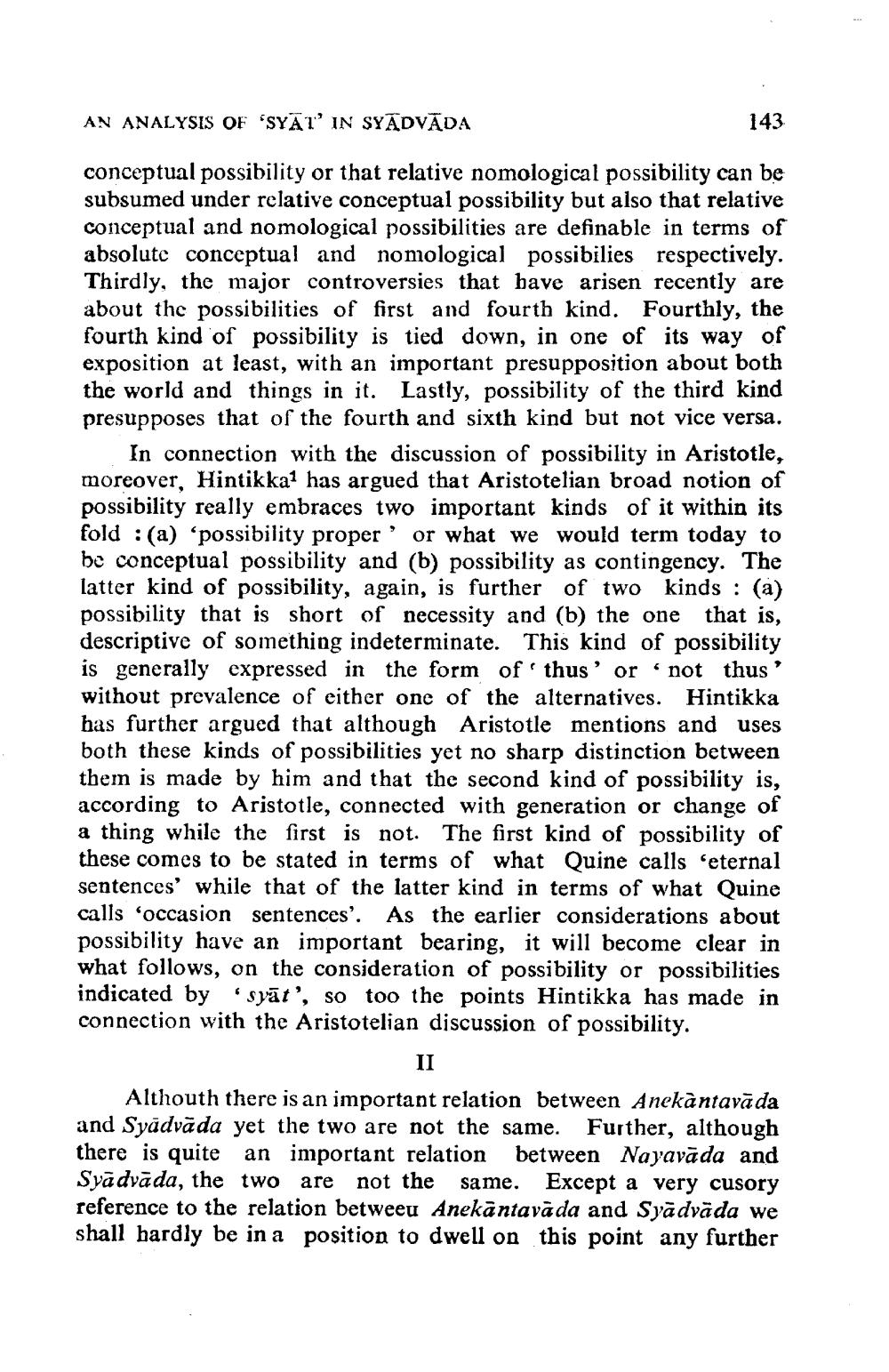________________
AN ANALYSIS OF 'SYĀT IN SYĀDVĀDA
143
conceptual possibility or that relative nomological possibility can be subsumed under relative conceptual possibility but also that relative conceptual and nomological possibilities are definable in terms of absolute conceptual and nomological possibilies respectively. Thirdly, the major controversies that have arisen recently are about the possibilities of first and fourth kind. Fourthly, the fourth kind of possibility is tied down, in one of its way of exposition at least, with an important presupposition about both
world and things in it. Lastly, possibility of the third kind presupposes that of the fourth and sixth kind but not vice ve
In connection with the discussion of possibility in Aristotle, moreover, Hintikkahas argued that Aristotelian broad notion of possibility really embraces two important kinds of it within its fold :(a) 'possibility proper' or what we would term today to be conceptual possibility and (b) possibility as contingency. The latter kind of possibility, again, is further of two kinds : (a) possibility that is short of necessity and (b) the one that is, descriptive of something indeterminate. This kind of possibility is generally expressed in the form of thus' or not thus' without prevalence of either one of the alternatives. Hintikka has further argued that although Aristotle mentions and uses both these kinds of possibilities yet no sharp distinction between them is made by him and that the second kind of possibility is, according to Aristotle, connected with generation or change of a thing while the first is not. The first kind of possibility of these comes to be stated in terms of what Quine calls "eternal sentences' while that of the latter kind in terms of what Quine calls 'occasion sentences'. As the earlier considerations about possibility have an important bearing, it will become clear in what follows, on the consideration of possibility or possibilities indicated by syāt', so too the points Hintikka has made in connection with the Aristotelian discussion of possibility.
II
Althouth there is an important relation between Anekantavā da and Syädväda yet the two are not the same. Further, although there is quite an important relation between Nayavāda and Syādvāda, the two are not the same. Except a very cusory reference to the relation betweeu Anekāntavāda and Syādvāda we shall hardly be in a position to dwell on this point any further




